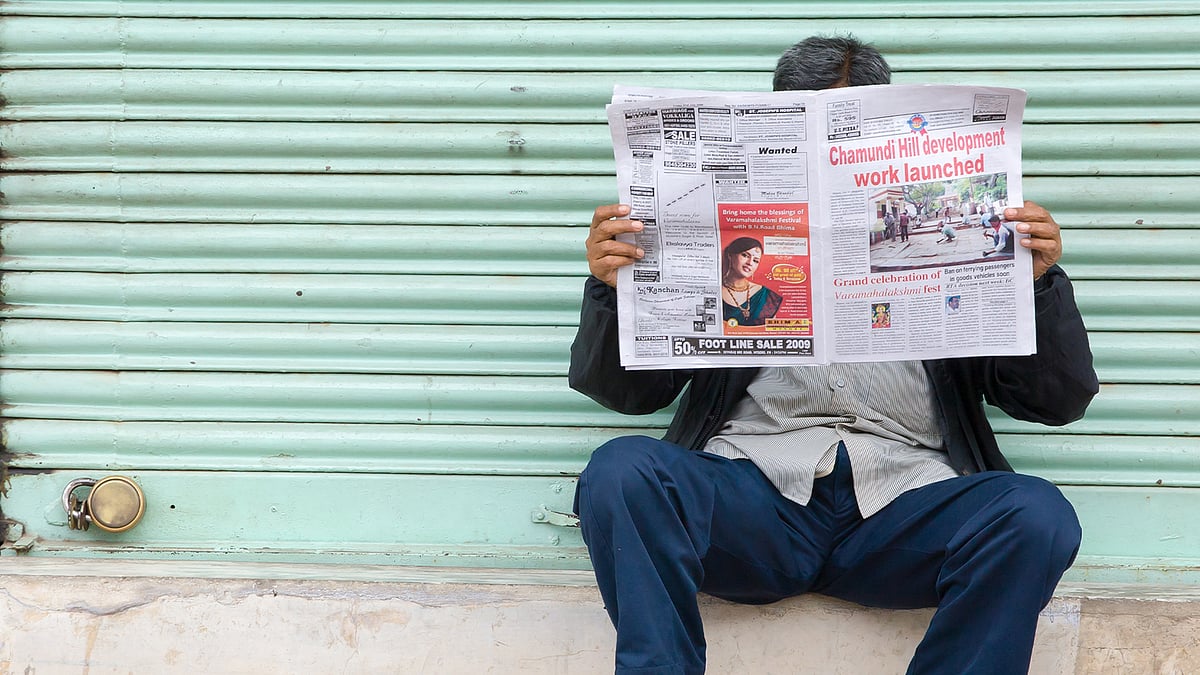Why the Baghpat fight between chaat vendors needed more than memes and mockery
The mundane anxieties of quiet lives may often lie behind instances of violence.
Much more than most would like to admit, the sight of a street fight or neighbourhood brawl is one of the top attractions of a casual stroll or a balcony glance. Ranging from getting involved to mediating to remaining an indifferent, yet guilty, pleasure-seeker, altercations and violent confrontations have a way with the public spectacle.
In a different sphere of social theatre, this side of collective voyeurism took a viral turn earlier this week, when a video of a fight between chaat vendors in western Uttar Pradesh’s Baghpat was widely shared. It even triggered a variety of memes, with people choosing their “favourite characters” and identifying supporting cast members.
It later emerged that the brawl was sparked by an old chaat vendor’s resentment against new competitors weaning away his customers and discrediting his product. However, for all the obvious hilarity of the short video, a section of the commentary on it was off the mark. Along with a flawed social understanding of mundane violence and its scale, it failed to grasp the everyday anxieties and deeper solitude of a variety of professions.
There was a flawed line of argument, for instance, in an editorial in the Indian Express, which was of the view that while other forms of violence in Uttar Pradesh are rooted in “grim reality”, the viral video was hilarious for being a point of departure. But while sounding cautious about not endorsing violence, the Express discounted the share of non-political and non-communal incidents in defining the violent “reality” of a region. Such inferences only reveal the ineptitude of social understanding of crime and violence.
If one scans the daily crime reports registered with the police or published in local dailies, it’s usually banal causes – property or family disputes, relationship issues, professional rivalries, random altercations – that trigger a very high number of violent incidents. This “reality”, of course, is supplemented by the activities of organised crime syndicates involved in extortion, robbery, or even white-collar crimes. Even though the national media is more likely to be interested in incidents of violence rooted in communal or caste tensions, or issues of state inaction or action, the violent landscape of the region is largely formed by more immediate and mundane triggers.
Assuming that one isn’t taking the overstretch of the “personal is political” line, violent reality is significantly defined by the mundane situation of an ordinary citizen against another citizen. In simpler terms, it’s the victim-perpetrator binary devoid of social and political categories. Sometimes, even the share of culpability might not be clear – as it wasn’t in the viral brawl. In the unfolding of daily lives and interactions, the grievances against political and social adversaries are far less intense than those against neighbours, business, and professional rivals, as the elderly chaat vendor in Baghpat discovered.
One result of the precedence that the national media gives to incidents of violence with a higher probability of political weaponisation is that it loses sight of other forms of crime. One may, for instance, recall how the discourse around mob lynchings got centred around communal factors only while lynchings in India, triggered by a variety of factors including retributive urge of instant justice, take different forms.
Take, for instance, the number of lynchings documented by the Bihar police in 2019. As I wrote at the time:
“There were 39 mob lynchings in just two and a half months, resulting in the killing of 14 people. And common to most of these incidents was rumours of child abduction. Attempts by a section of the media at communalising one such incident became irrelevant in the face of several mob lynchings where the victims belonged to all sections of society. The menace prodded the Bihar police to launch sensitisation drives against rumours of child-lifting and the consequent violence. Announcements on loudspeakers, awareness campaigns on social media, posters and hoardings, and camps organised by district magistrates and police officials have sought to warn the public of the dangers of spreading and believing such rumours.”
Clearly the “grim reality” of rumours, or what we now call “fake news”, has many constituents. In a not-so-lighter vein, one may add that even the elderly chaat vendor in Baghpat complained about his competitors spreading rumours that his chaat was stale.
Also, while one isn’t sure about the popularity and sales of the fighting chaat vendors in Baghpat, the anxious loneliness of customer-seeking is another takeaway from the brawl. A usual street scene in India is filled with faces where goods and services providers exuded both energy and anxiety, even despondence. There are few things as sad as seeing a shopkeeper or vendor stare at the street all day, somehow resigned to nothingness with their unsold wares and services.
It often takes the form of a method in madness, such as the queue system followed by share auto rickshaw drivers in Indian cities. Such fragile deals, however, witness their own share of brawls as complaints of violations or inconsistent compliance lead to violent confrontations. While devised as a survival strategy, such an informal pact cannot overcome the anxieties of a higher wait period for one’s turn, falling income, and someone cutting corners.
In many ways, the Baghpat brawl leaves social notes on its mundane origins and a familiar sense of street violence. While the slapstick sequence of its violent unfolding and its cast of characters make it a trending spectacle, it also reveals the anxieties of street salesmanship and the intense turf wars of customer-seeking.
 Why media critique in India is a double-edged sword
Why media critique in India is a double-edged sword